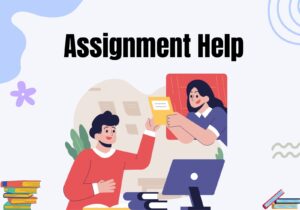
Did you know certain words can immediately trigger red flags for AI detectors? You might write what feels like a natural paragraph, but an AI content checker could still label it as “100% AI-generated.” Frustrating, right? This can be especially hard for students using AI tools to brainstorm or speed up essay writing. So, what exactly sets off these alerts? And how can we spot “safe” versus “risky” patterns?
Over the last few months, we looked at 1,000 results from various AI detector tools across essays, blogs, and emails. This blog breaks down what we found—how word patterns matter, why your content might get flagged, and how to naturally and ethically avoid detection.
The Rise of AI Content Checkers
From Turnitin’s AI checker in schools to GPTZero and Originality.ai for writers and marketers, AI content checkers are everywhere. Universities, publishers, and businesses use them to check originality. A high AI score could mean failing a paper, losing credibility, or SEO penalties—none of which you want.
It’s clear that just having accurate content isn’t enough anymore. You need the right tone, which means understanding how AI detectors work is key.
Our Dataset: 1,000 AI Detector Scans
We collected 1,000 results from top AI detectors like QuillBot, Turnitin, and Surfer’s tool. Our samples included real student work, AI-written essays, and mixed content. No tool was perfect, but patterns emerged—especially around words and sentence structures that triggered flags.
Safe vs. Risky Word Patterns
AI likes predictability. Certain “smart” or formal phrases are common in AI-generated text. Human writing, on the other hand, is messier, more emotional, and varied in structure.
Here’s what we noticed:
- Short, natural sentences: Humans mix sentence lengths; they don’t always write long, polished paragraphs.
- Contractions: People say “don’t” instead of “do not,” “it’s” instead of “it is.” It sounds more natural.
- Personal stories: Phrases like “In my experience” or “I remember when” signal real authorship.
- Sentence variety: Humans don’t start every sentence the same way, but AI often does.
Certain words and phrases appeared “safe” in many human-like examples, such as:
– “I believe,” “I think” add personal touches
– “For example,” “Let’s say” introduce relatable points
– Conversational markers like “Honestly,” “To be fair,” and contractions like “don’t,” “can’t,” “it’s” create natural flow
– Fillers like “you know,” “so,” and “well” mimic real speech rhythm
It wasn’t just individual words but how often and where they appeared. AI tends to repeat predictable patterns—humans don’t.
Word Patterns by Type of Writing
Different types of writing had different safe-word habits:
- Essays: Opinion statements, personal experiences, and clear transitions worked well
- Blogs: Casual tone, rhetorical questions, and speaking directly to the reader (“you,” “we”) felt more human
- Emails/Business: A mix of formal and informal language helped avoid sounding like a template
- Academic: Even formal writing benefits from varied sentence structure and real-life examples
The key is that what’s “safe” in one context might seem “suspicious” in another. Always match your tone to your audience and purpose.
How to Use These Insights
Want to write content that slips past AI detectors while sounding natural? Rewrite drafts in your own voice. Add personal stories, vary sentence lengths, and don’t shy away from contractions and opinions. Use tools like an AI Humanizer or a text-to-human converter to polish robotic drafts. But remember—it’s not just about swapping words. Focus on rhythm, tone, and variety.
Conclusion
Our look at 1,000 AI detector results showed that word choice, sentence structure, and tone all help avoid flags. Being too formal or repetitive raises the risk—even if your work is original. By knowing these patterns, you can naturally and ethically dodge AI detection.
Want your AI-written content to sound more real? Try our AI Humanizer or use our text-to-human tool—great for students, marketers, and writers who want to write with confidence and clarity.







